Have you ever wondered what is it about a certain face that we find attractive, or boring, or scary? How about your own face? I have days when I wake up, look in the mirror, and I swear it’s a totally different face, and not a flattering one at that. On the other hand, I also have days when I catch a glimpse of myself in a mirror and think to myself “hm, I look really nice today.” I am sure you have moments like that too. You know your face doesn’t magically change overnight though. It’s the same face, but somehow it looks more or less attractive on day to day basis.
To demonstrate one of the ways in which we perceive attractiveness I created a character for us to play with. I painted this character in a digital painter program (Corel Painter 18), using artist oils. It is essentially an oil painting of an imaginary girl of more or less my age, displaying a more or less neutral expression. She will be our model for today.
Since this is not an oil painting tutorial, I will not take you through the step by step process of her creation, but rather jump straight from sketch to (fast forward 24 hours) the finished oil painting of our Jane Doe.
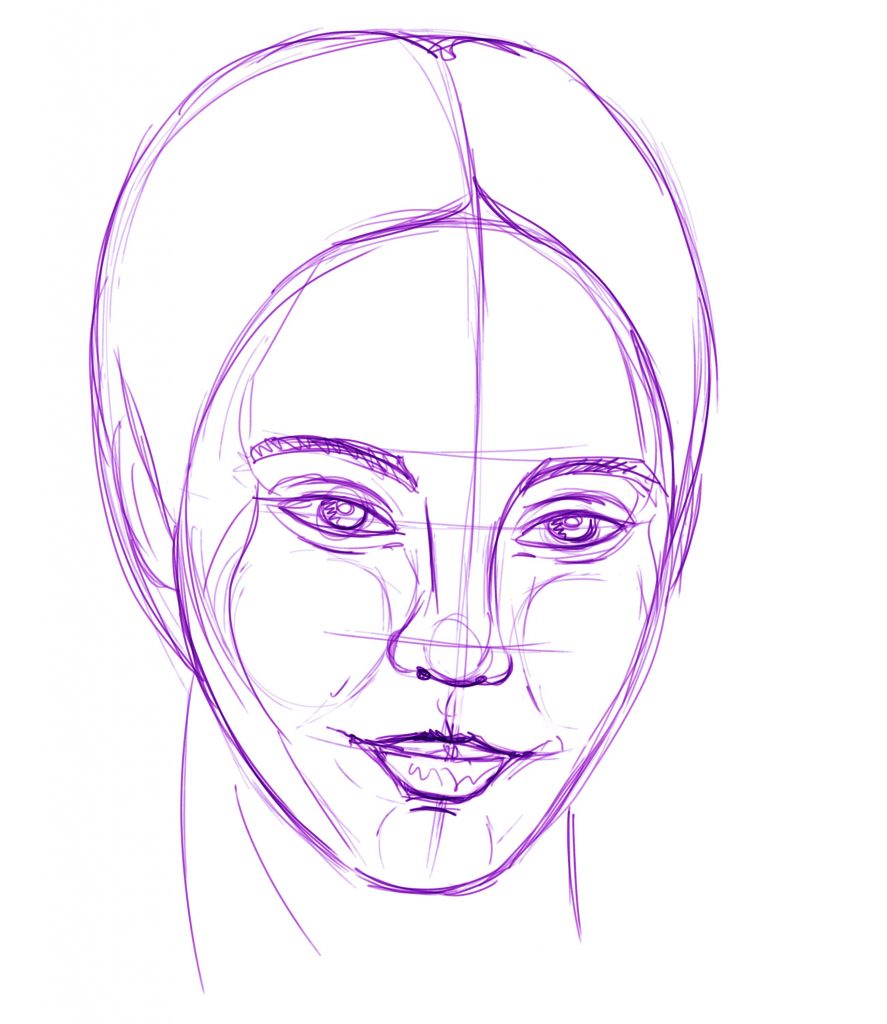
A rough sketch of what my girl will look like.
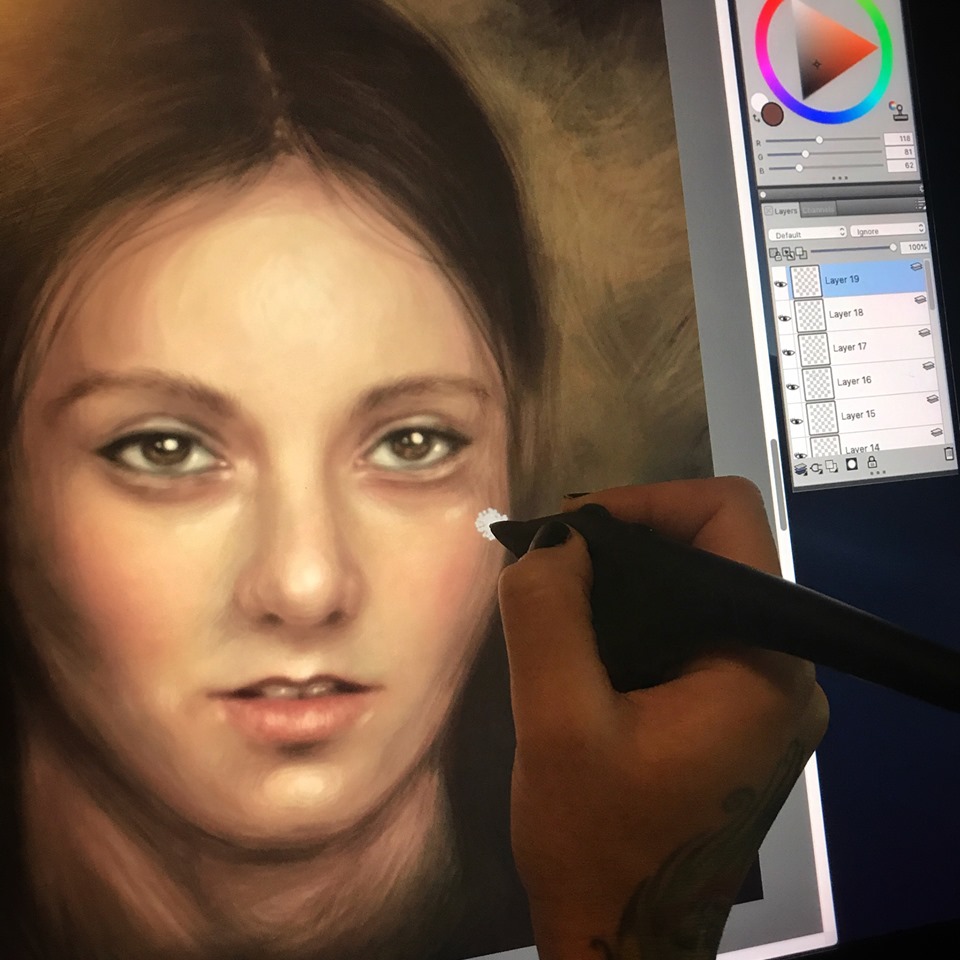
Paint, paint, paint…..
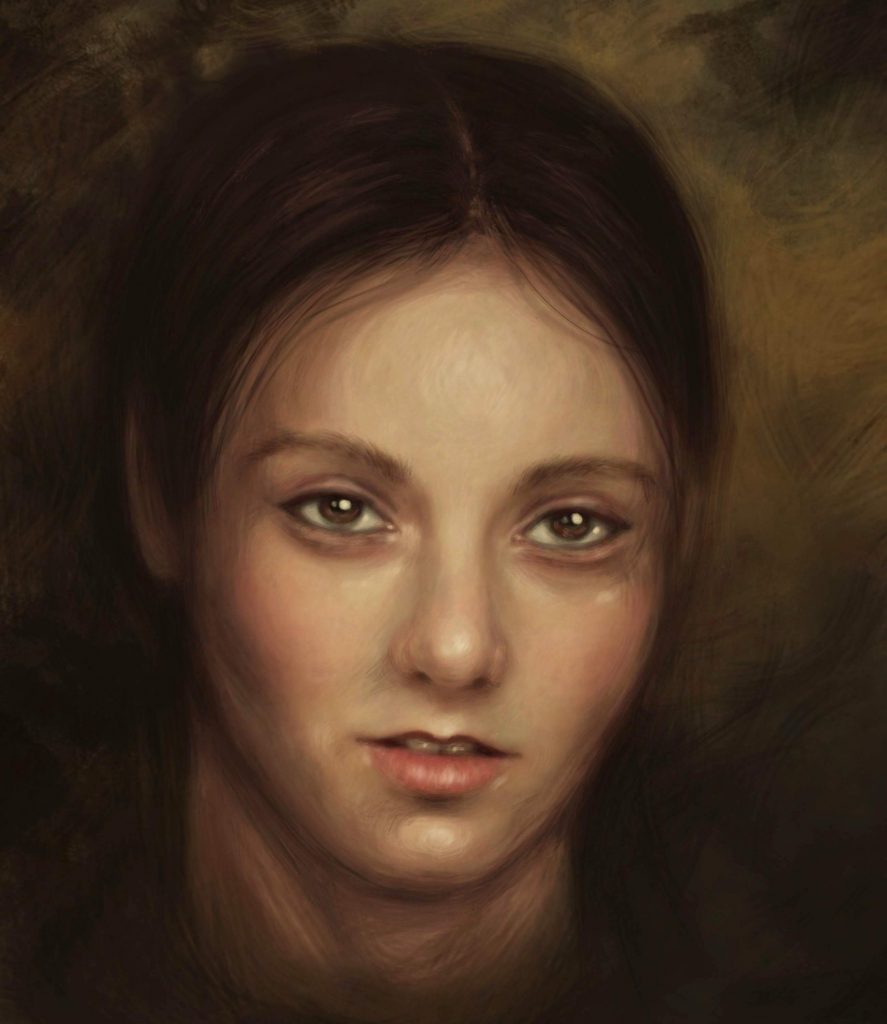
A day of painting later, she is complete.
Now that we have a face to work with, let’s study it for a minute. Obviously we all have different tastes and our own personal reactions to every face. Some of you may find this girl attractive, some may find her rather dull, some may not care one way or the other. Probably, very few people will find her ugly. In this painting I went for a more classical painting approach, presenting a face that is pleasant to look at, but not distracting with exotic beauty or an unusual emotional expression. I wanted her to be just a girl, like me.
I painted my girl in what I imagine to be soft, defused daylight, illuminating her face pretty evenly. This way we don’t have any extreme shadows adding to the way we perceive her.
Let’s see what happens to her if we add just a little bit of definition to the areas around her eyes.
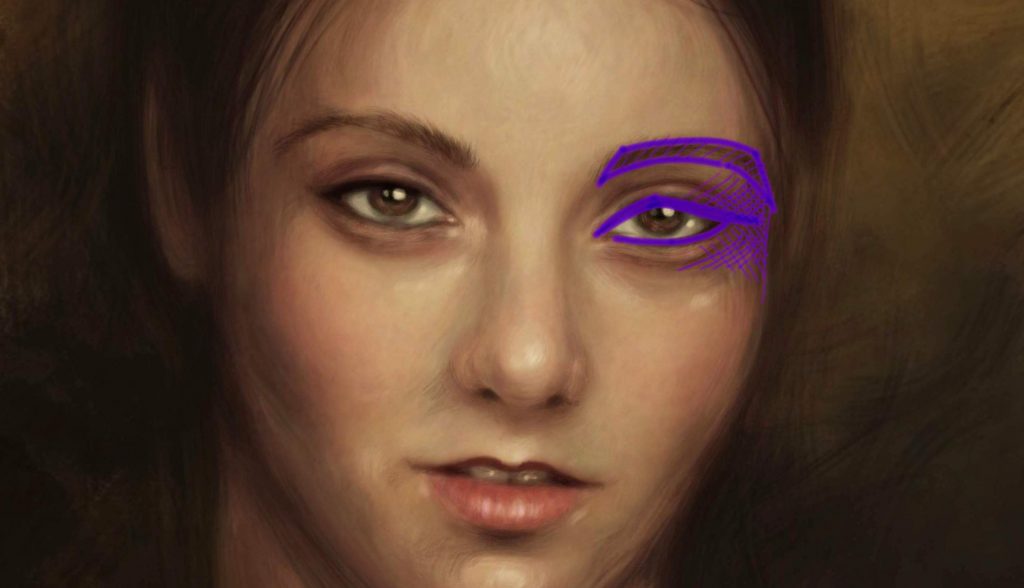
I am adding just a little bit more color and shadow to the eyelashes, eyelids, and eyebrows.
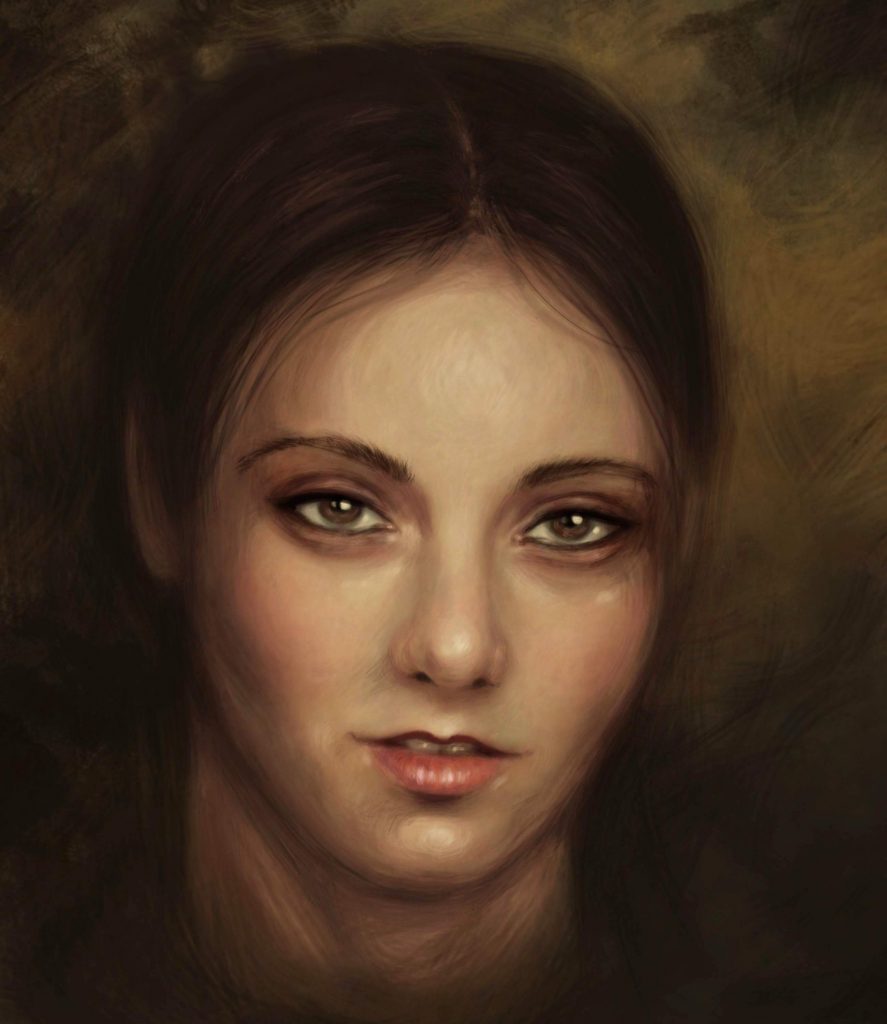
I am not changing the shape of the eye or the eyebrows. I am simply adding a touch of dark brown tones around the eyes and to the eyebrows.
I was very gentle with my edits, but look at the difference that it made. She is the same girl, but somehow she looks a bit more vibrant. Just a touch of definition on the eyelashes and the eyebrows, and we intuitively perceive this face as more lively.
Let’s see what happens if we go from our neutral face in the other direction, removing some of the definition around the eyes.
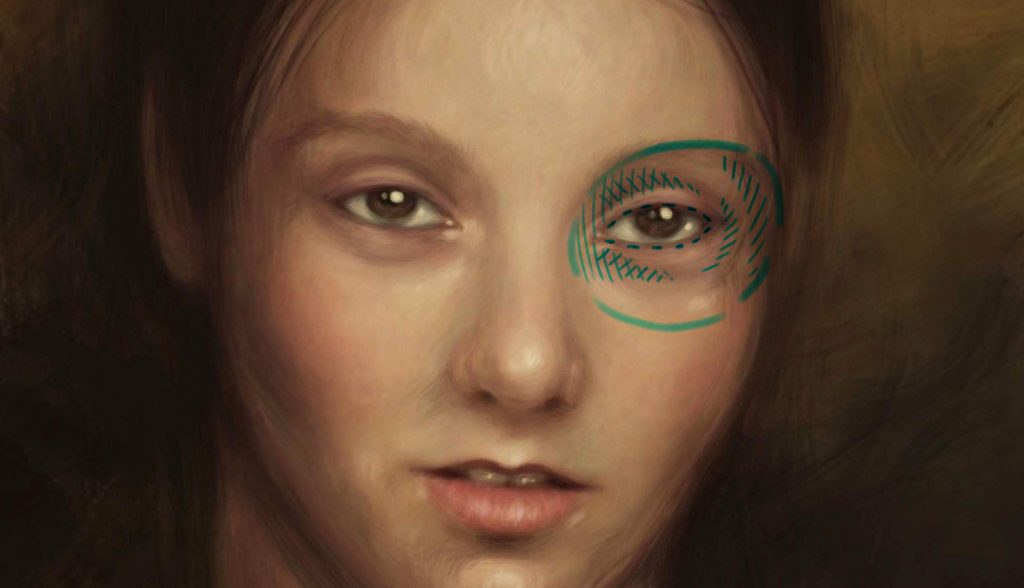
In this case, I am softening the definition around the eyes, making the eyebrows and the eye lashes more pale, and also smoothing out some of the lines around the eyes.
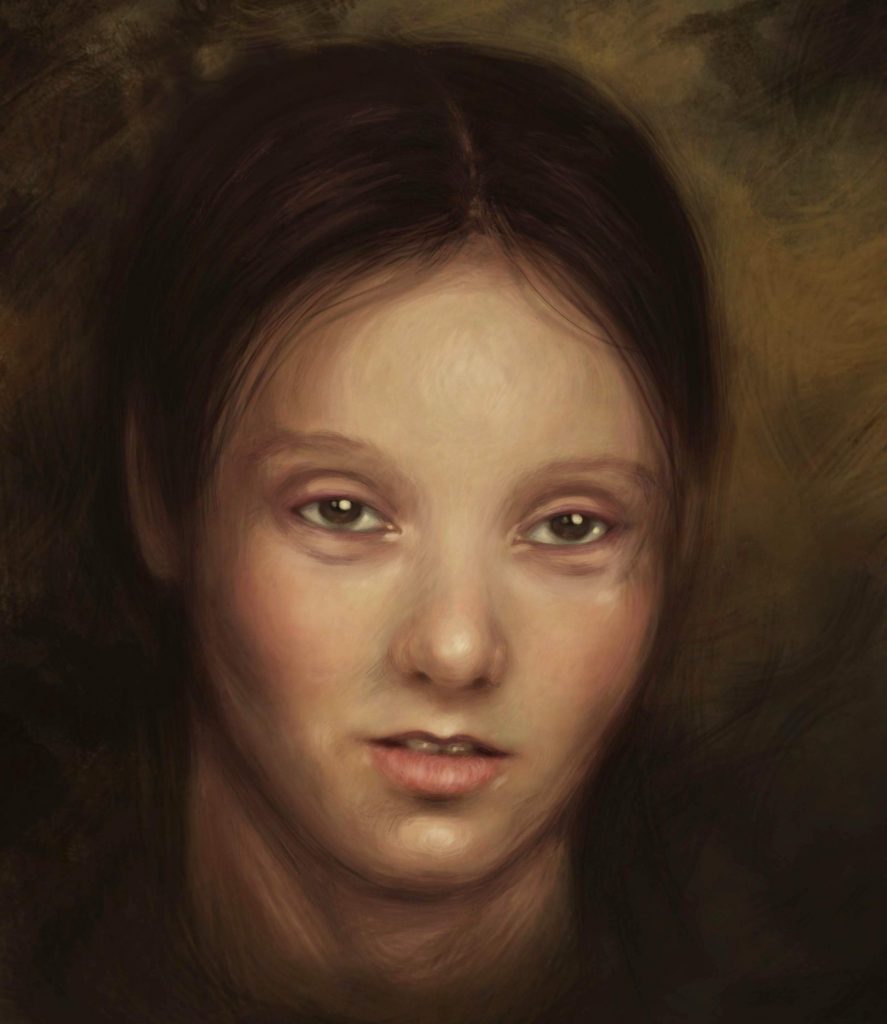
Once again, the edits were minor, yet her face changed quite noticeably.
A pretty dramatic change, isn’t it? Whether you find her more or less attractive, you must agree that she looks somehow more vulnerable, her expression plainer. She doesn’t have that glow and intensity of the eyelash girl. Her eyes, without the definition of lashes, brows and shadows, seem smaller and further apart.
Our limbic brain naturally perceives bigger eyes as more attractive. That stereotype has nothing to do with Hollywood, or fashion, or modern makeup trends. In fact, those trends work because they are based on what our brains already perceive as attractive. So, as a painter, illustrator, colorist, or make-up artist, if you wish to make your character look, I hesitate to say less attractive, but rather plainer, tone down the definition around the eyes. On the other hand, if you want to make them more interesting, more seductive, more expressive, try adding just a touch of definition to the eye area.
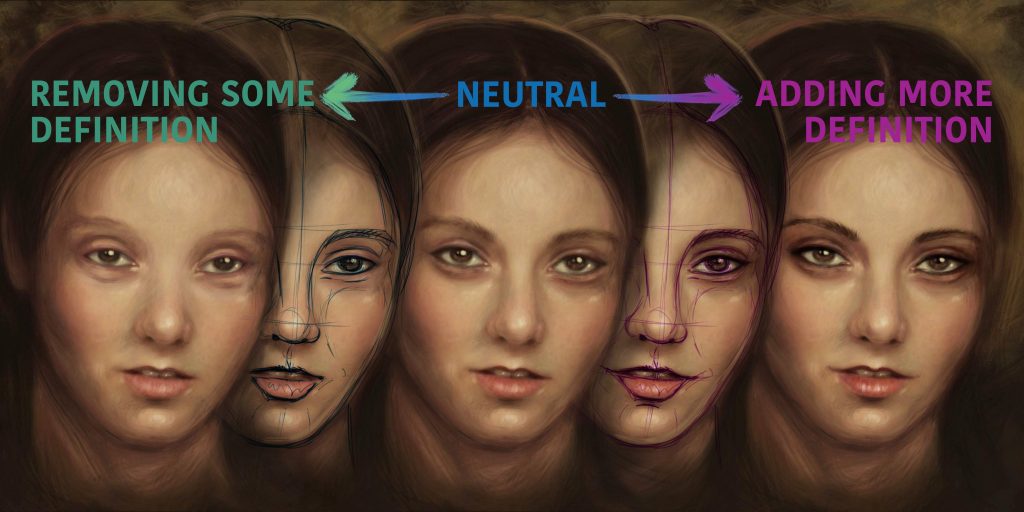
Notice that we never changed the face. The bone structure, the direction of the gaze, the lighting, the parting of the lips, none of these things were ever touched in this experiment. We only played with adding and removing definition around the eyes.
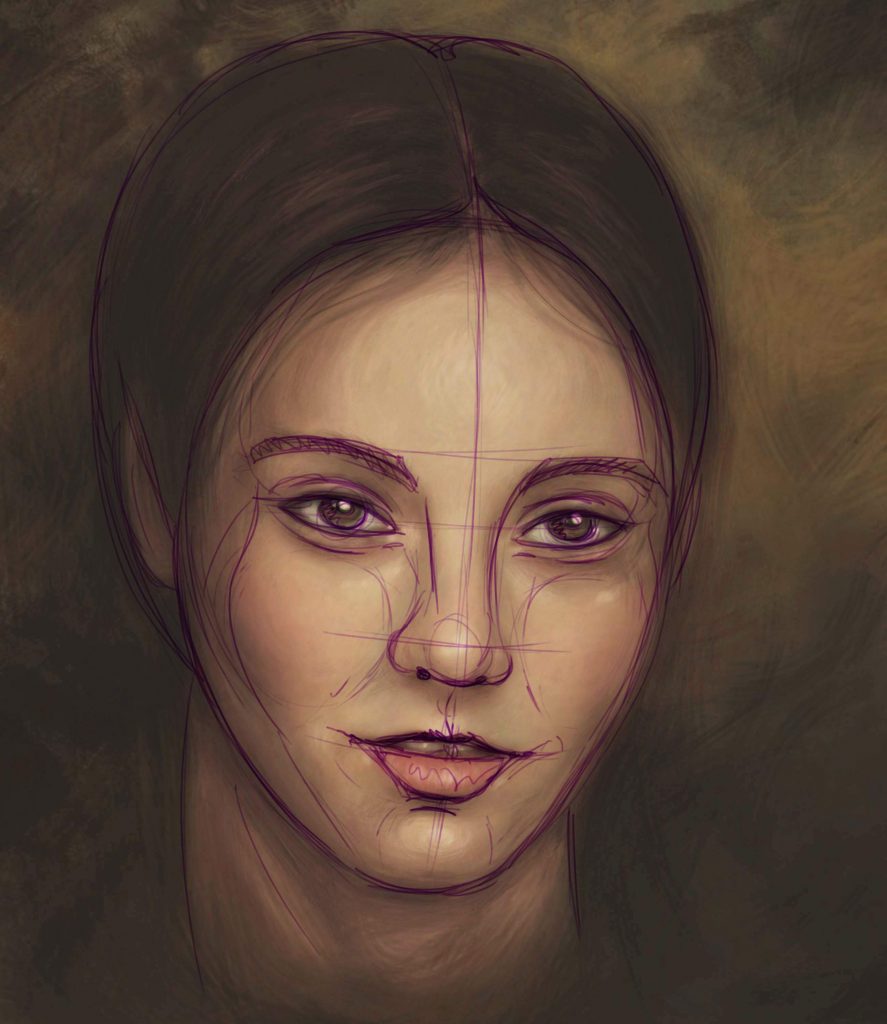
Let’s get back to the mystery of my ever-changing morning face. Most of the time, the definition around the eyes is created by the changing light throughout the day. In the morning we wake up with our eyes slightly poofy and squinting and we usually admire ourselves in brightly lit bathrooms that are anything but flattering to the perception of the face. What we see is smaller, less defined eyes and we immediately perceive them as unattractive. Run that through an emotional filter of “I just woke up and I am not exactly filled with positivity” and you got yourself a recipe for seeing yourself as plain awful in the morning.
As the day progresses, however, we wake up, wind up, start interacting with people or animals. The sun rises, and we are now illumined by natural light that is cast from above, creating those beautiful eyelash shadows on our eyes. Even without the use of makeup, our eyes look more defined and vibrant in daylight than they do in that awful morning bathroom light. Plus, now we are adding (hopefully positive) emotion to our face, which naturally makes it more attractive, and viola – your face has transformed into something that is pleasant to look at even to yourself.
I hope this has been helpful and inspiring to you not only as artists but also as people struggling with your self-image. Now, go out there and practice making your characters and yourselves look more vibrant, and don’t forget to smile.
